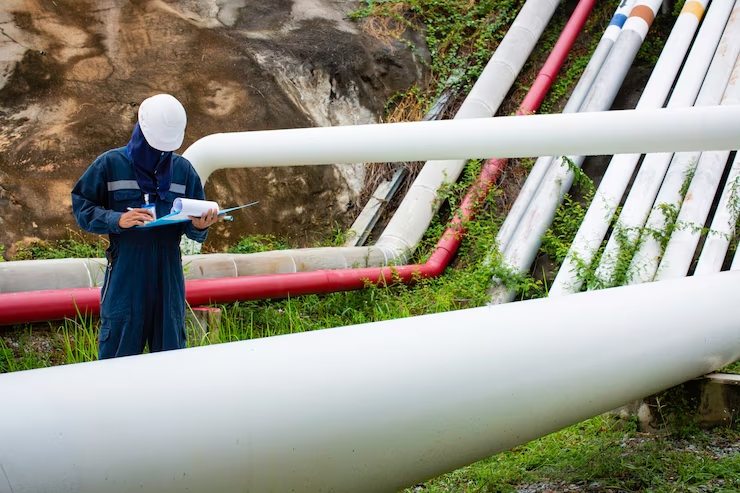The safe and efficient transportation of resources like oil, gas, and water relies heavily on pipelines. But building and operating these vital infrastructures isn’t as simple as laying down a giant pipe. A complex web of regulations governs every stage of pipeline development, from design and construction to operation and maintenance. This is where technological compliance comes in – ensuring your project adheres to the latest standards and regulations using advanced tools and processes.
Why is Technological Compliance Important in Pipeline Development?
Technological compliance isn’t just about ticking boxes. It’s about safeguarding public safety, protecting the environment, and ensuring the long-term viability of your pipeline project. Here’s a breakdown of the key benefits:
- Enhanced Safety: Compliance with pipeline safety standards minimizes the risk of accidents and incidents. This protects workers during construction, communities living near the pipeline, and the environment.
- Environmental Protection: Regulations often mandate practices that minimize the pipeline’s environmental impact. This can include measures to prevent leaks, spills, and habitat disruption.
- Project Efficiency: Following a compliant development process helps streamline approvals and permits. Technological tools can automate tasks and improve communication, leading to faster project completion.
- Reduced Costs: Non-compliance can lead to hefty fines, project delays, and even complete shutdowns. Technological solutions can help identify and address potential compliance issues early, avoiding costly setbacks.
- Improved Reputation: Demonstrating a commitment to technological compliance fosters trust with stakeholders, regulators, and the public. This can enhance your company’s reputation and social license to operate.
Additionally, we suggest reading out “How to Enhance Pipeline Integrity with FlexSleeve Technology.”
Navigating the Regulatory Landscape
The specific regulations you need to comply with will vary depending on several factors, including:
- Location: Different countries, states, and regions have their own regulatory bodies and frameworks.
- Pipeline Type: Regulations differ for pipelines transporting oil, gas, water, or other materials.
- Project Scale: Larger and more complex projects may face stricter scrutiny.
Regulatory Bodies and Frameworks
Here’s a glimpse into some of the key regulatory bodies and frameworks you might encounter:
- Federal Energy Regulatory Commission (FERC) (US): Oversees interstate transmission of natural gas, oil, and electricity.
- Pipeline and Hazardous Materials Safety Administration (PHMSA) (US): Sets safety standards and enforces regulations for pipelines transporting hazardous materials.
- American Society of Mechanical Engineers (ASME): Develops and maintains codes and standards for boilers, pressure vessels, and piping systems.
Technological Solutions for Compliance
The good news is that technology offers a plethora of tools to streamline compliance in pipeline development. Thus, this translates to significant advantages for project stakeholders. By embracing these solutions, companies can not only ensure adherence to regulations but also achieve greater efficiency throughout the development process. Therefore, this focus on technological compliance empowers you to navigate the regulatory landscape with confidence and deliver a project that benefits everyone involved.
- Geographic Information Systems (GIS): GIS software helps visualize the pipeline route, identify sensitive environmental areas, and ensure compliance with land-use regulations.
- Pipeline Design Software: Specialized software helps design pipelines that meet safety and environmental standards. These tools can perform stress analysis, model fluid flow, and optimize pipeline routing.
- Document Management Systems: Streamline permit applications, environmental impact assessments, and other compliance-related documents.
- Inspection and Monitoring Technologies: Advanced tools like drones and ultrasonic testing equipment enable detailed pipeline inspections, ensuring structural integrity and leak detection.
- Compliance Management Software: Integrates various functionalities like document management, risk assessments, and audit trails, simplifying the overall compliance process.
Moreover, read out “FlexSleeve: A Comprehensive Guide to Next-Generation Pipeline Protection.”
Building a Culture of Compliance
Technological solutions are a powerful force, but they can’t guarantee compliance on their own. Furthermore, here are some additional practices to consider:
- Develop a Compliance Plan: Outline the specific regulations applicable to your project and establish a clear plan for achieving compliance.
- Invest in Employee Training: Ensure your workforce understands the relevant regulations and best practices for compliant pipeline development.
- Regular Audits and Reviews: Regularly assess your compliance processes to identify and address any gaps.
- Continuous Improvement: Stay updated on evolving regulations and adapt your technological solutions and processes accordingly.
Conclusion
Technological compliance is no longer a burden in pipeline development; it’s an essential component for ensuring safety, efficiency, and long-term success. In fact, by embracing the right technological tools and fostering a culture of compliance, you can navigate the regulatory landscape with confidence. This will not only ensure your project adheres to the latest standards, but it will also lead to a more streamlined and efficient development process. Thus, by prioritizing compliance, you deliver a project that benefits everyone involved, from workers and communities to the environment and your company’s reputation.





